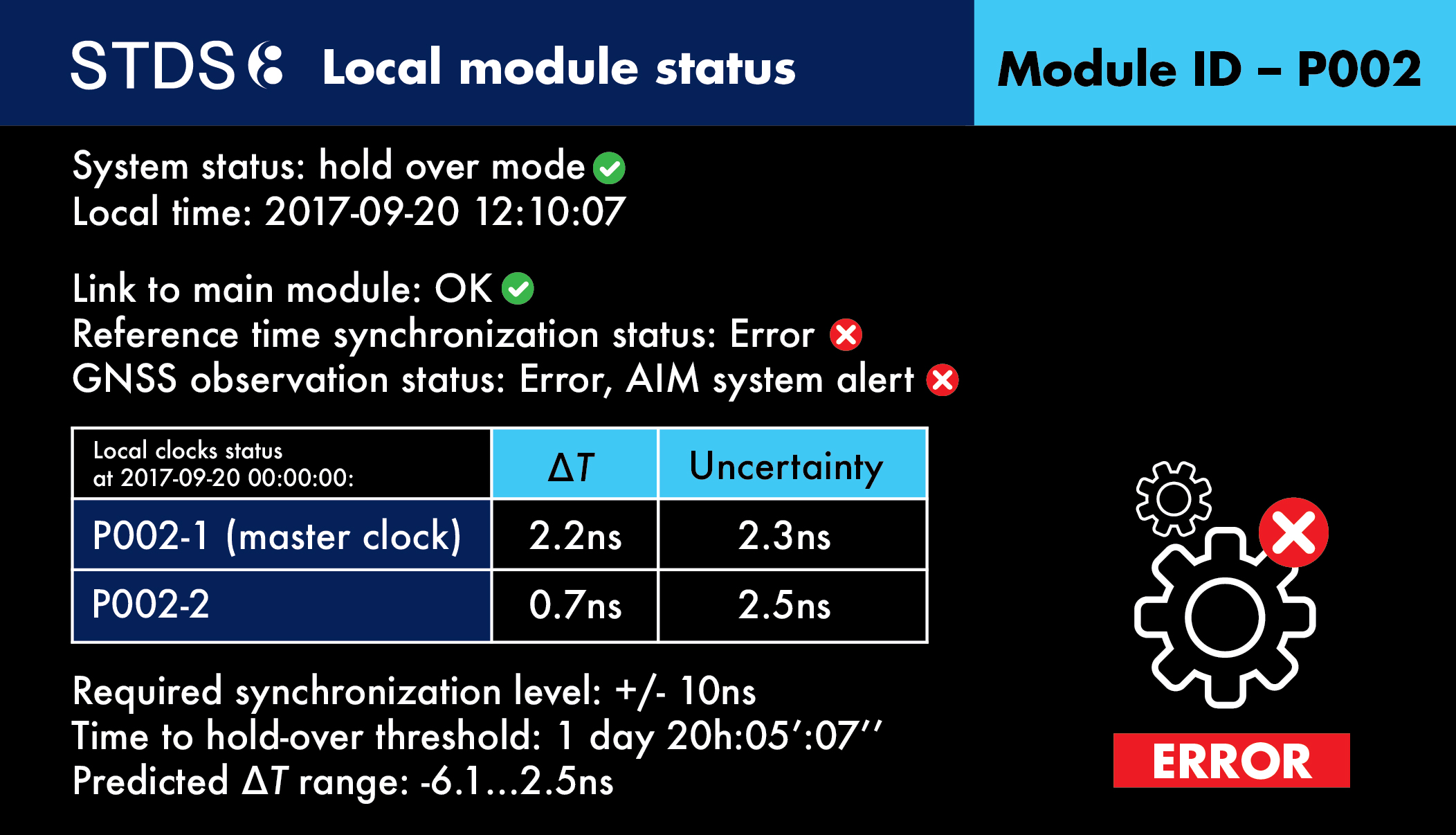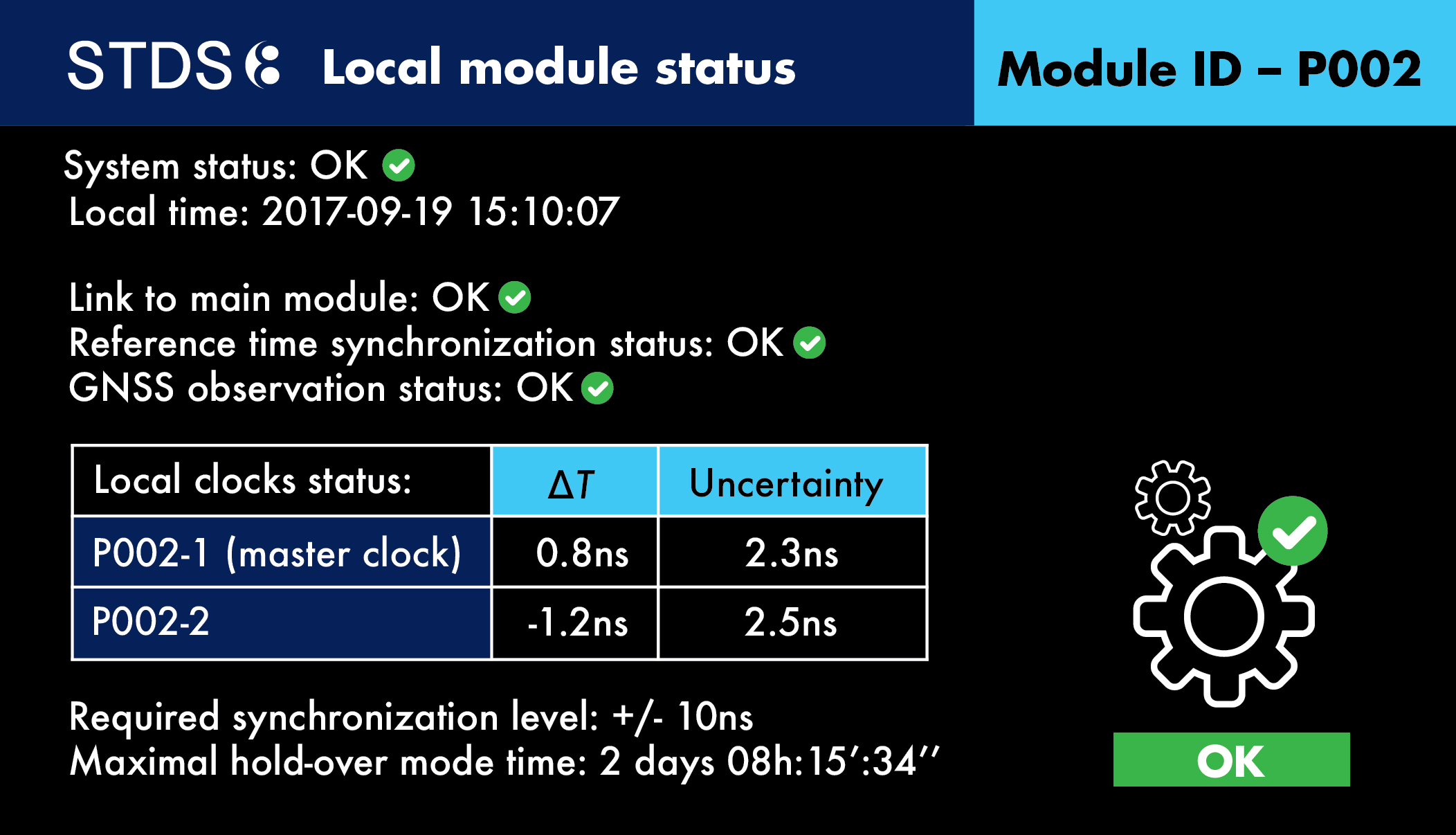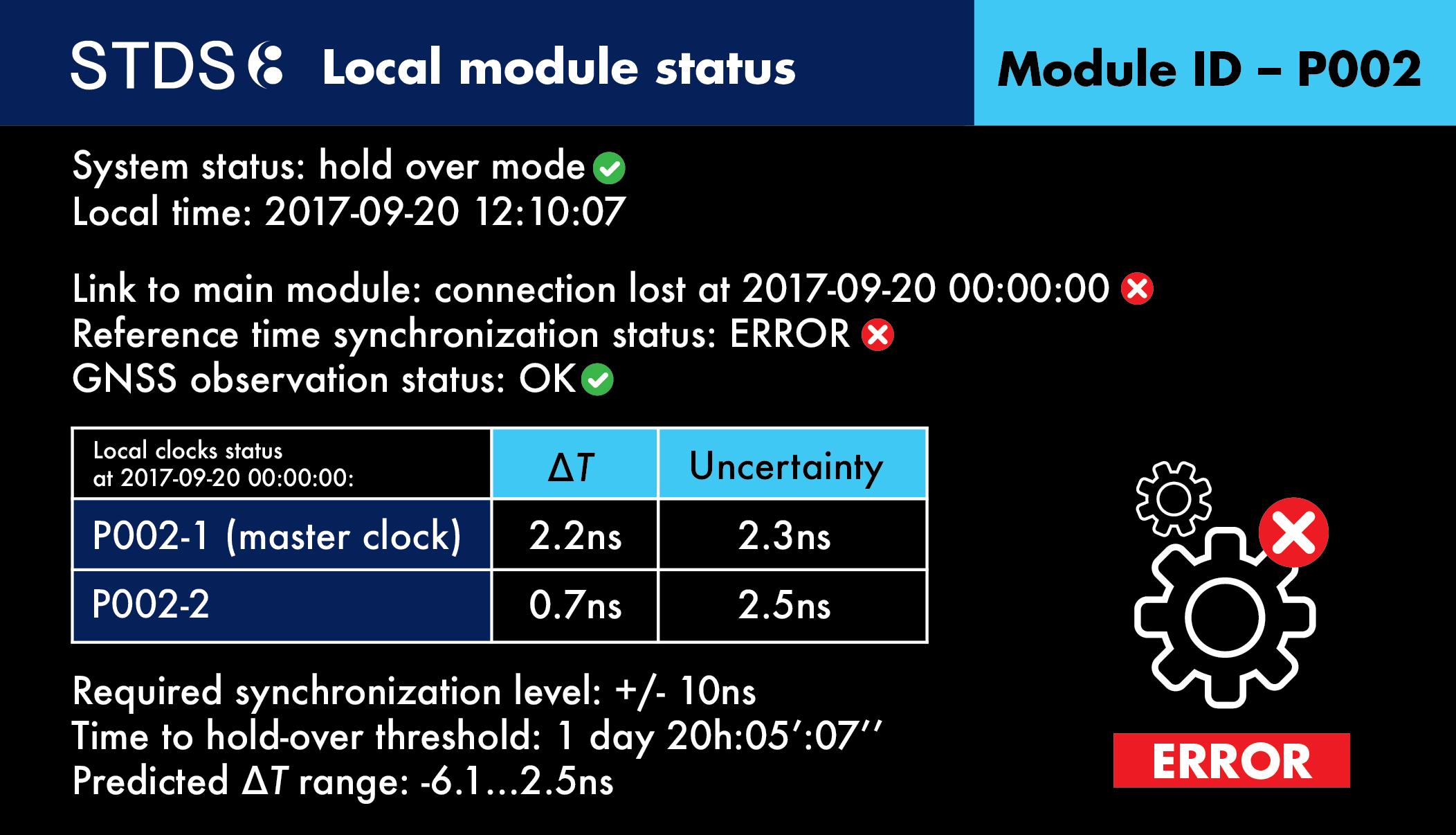Safe Time Distribution System - 8
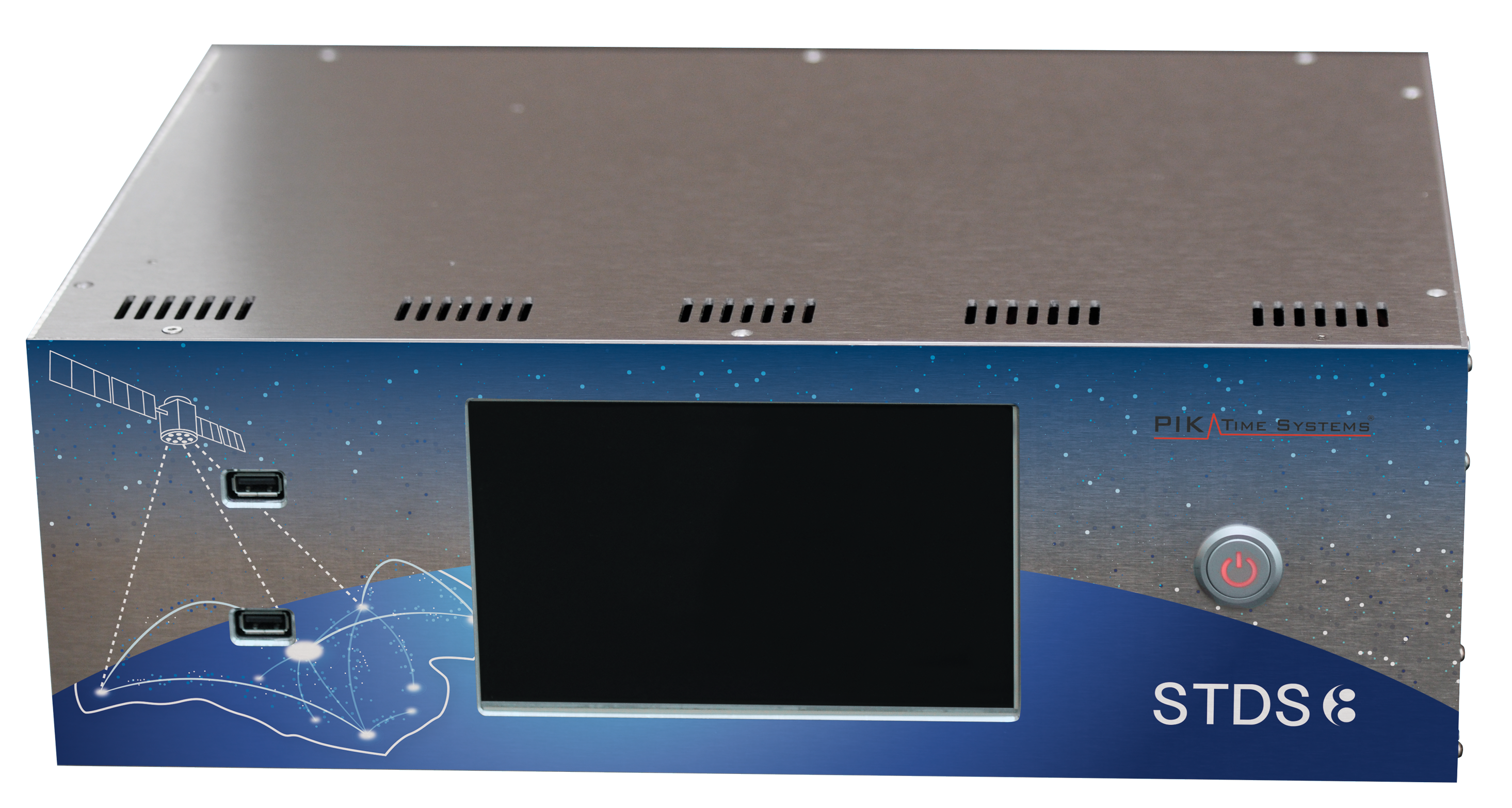
 | Introduction | Synchronization is mostly based on direct readings from GNSS (mainly GPS offering good accuracy at no cost). However, this is not a perfect way. Such solution is a threat to users due to: - Dependency on GPS - Not providing a reference time - Easy to be jammed - Risk of spoofing - Dramatic consequences if the time source fails or become unreliable Improvement comes with our recent development – STDS-8. It stands for: Safe because it makes your time scale independent from GNSS observation, resistant to spoofing or jamming. Time because the STDS-8 provides your critical business applications with the time signal at accuracy according to your needs. Distribution because we implemented robust and efficient signal distribution and data exchange. System because it can cover all elements essential for realization of your time scale. |

| Solution - description | User and Reference Time Centre (RTC) perform simultaneous CV GNSS measurements, according to a predefined schedule; Results of the User measurements are verified before being sent to the RTC; The RTC after receiving the results of the User measurements, determines the delay Δt (t) for measuring period t; Δt (t) is verified for the integrity of the measurements, using User data history; Data are stored at the RTC, in the User repository, from where they are downloaded to calculate the best possible estimation of User clock parameters. This estimation is also performed if the last measurement is determined as invalid in the data integrity check. This is because the estimates are based on the full set of data stored for the User’s clock; Data are authenticated and encrypted and then transmitted to the User where they are stored in local archives; The current set of parameters is used to control the user clock which provides the physical User time realization, that can be further distributed to User applications; When current parameters are not available or not correct, the user can generate a local copy of the official time in the holdover mode but only if the local clock distribution’s goodness factor reflects its current status. |
 | Core features | Autonomus The use of local atomic clocks at User premises allows independent integration of a local time from a stable frequency source (atomic clocks) with the time disseminated from the Master Reference Time Centre. Such solution allows to add autonomous local integrity to the time distributed from Master Reference Time Centre; Reference time The use of the CV (Common View) technique, based on GNSS signals, to transfer accurate reference time. In such solution, GNSS is only a medium for time comparison not a source of time as in other systems; Tracebility Data integrity validation system at Master Reference Time Centre constantly monitors User atomic clocks and tracks their behavior with respect to the reference time from the Master Reference Time Centre. All data are stored for the future verification. Clocks behavior can be tracked and checked with help of www interface at any time; Autonomous integrity monitoring Autonomous integrity monitoring detects and removes outlier resulting from a measurement error or counterfeit attempt. |
Solution overview
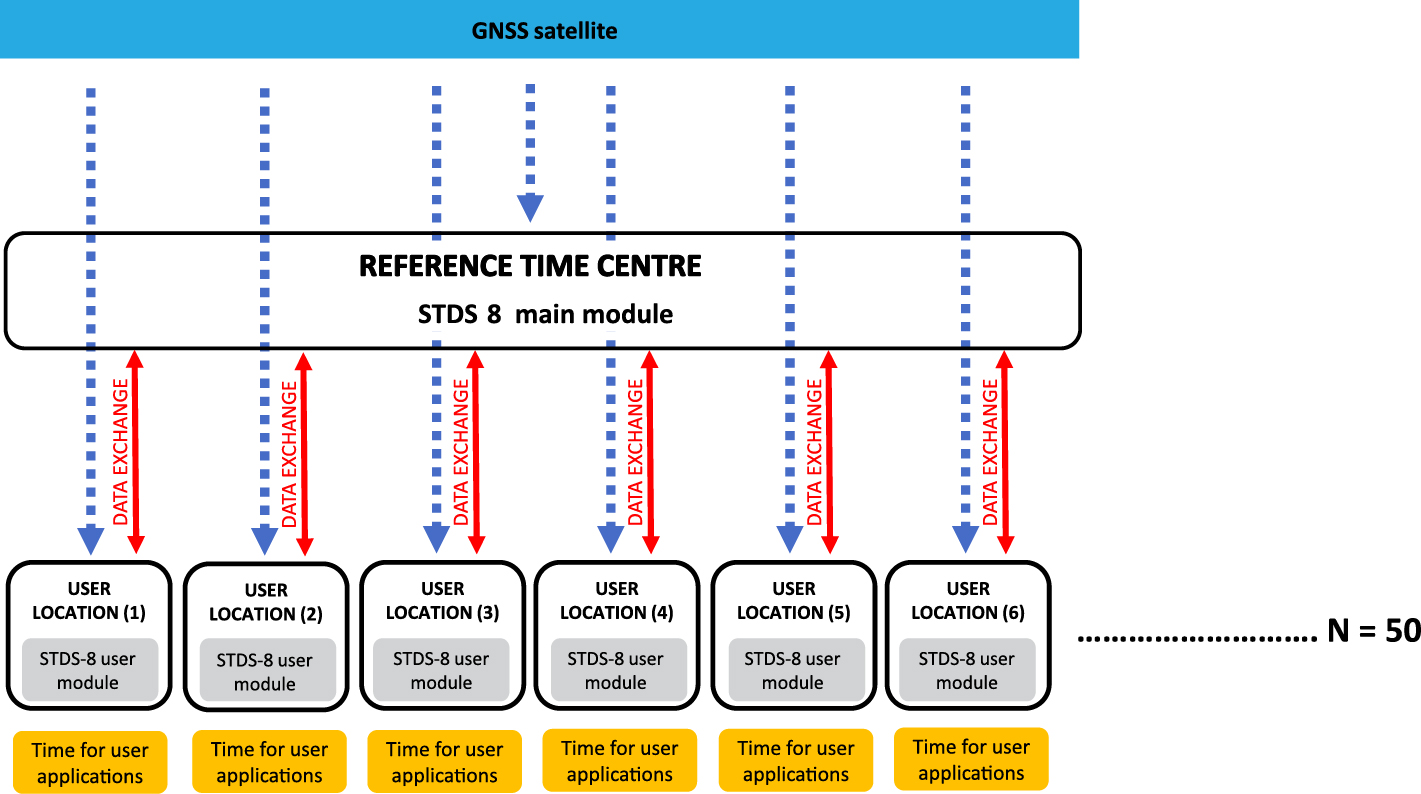
Solution architecture
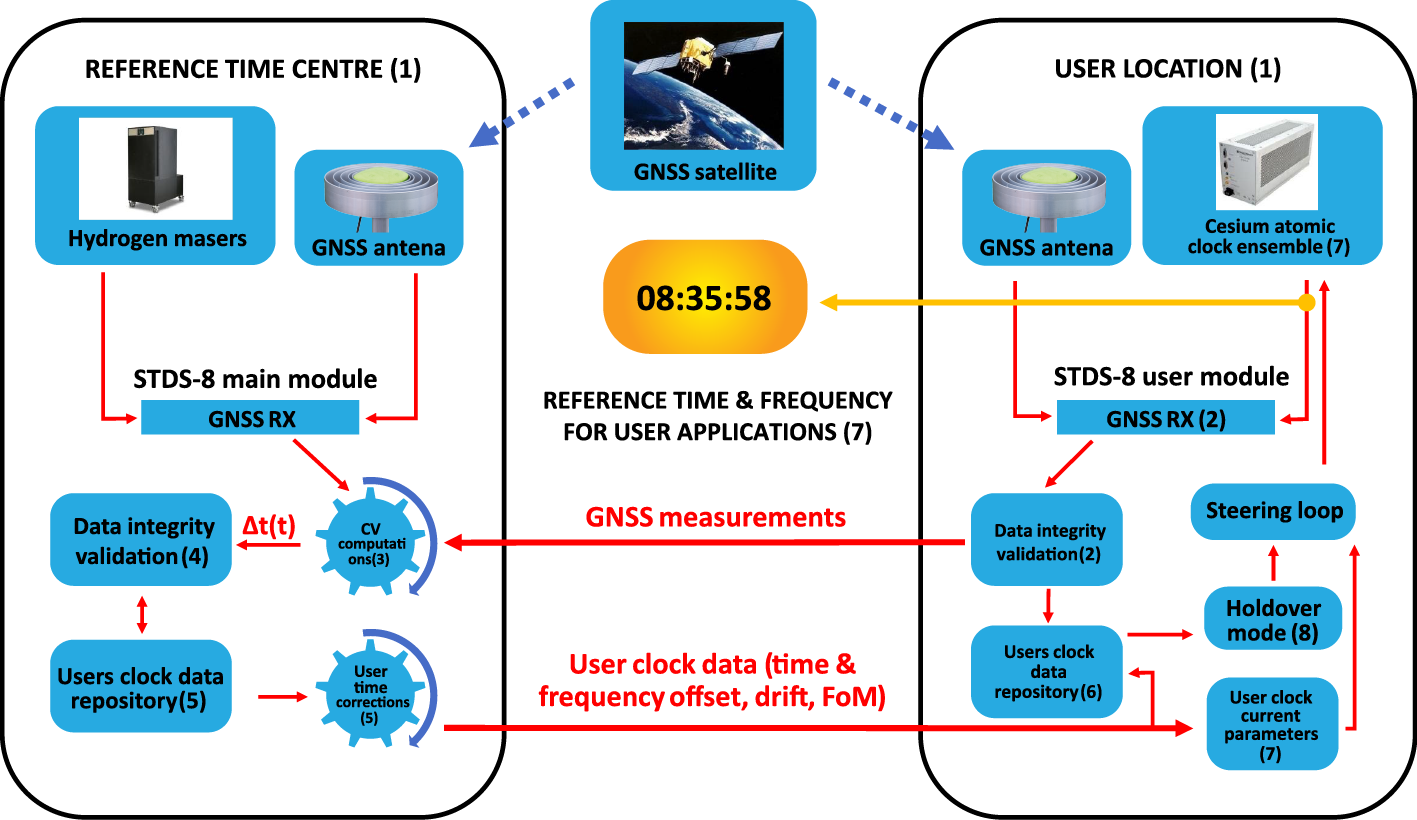
Screenshot of STDS-8 local module while in full Synchronization mode
Screenshot of STDS-8 local module while Synchronization is lost due to connection failure
